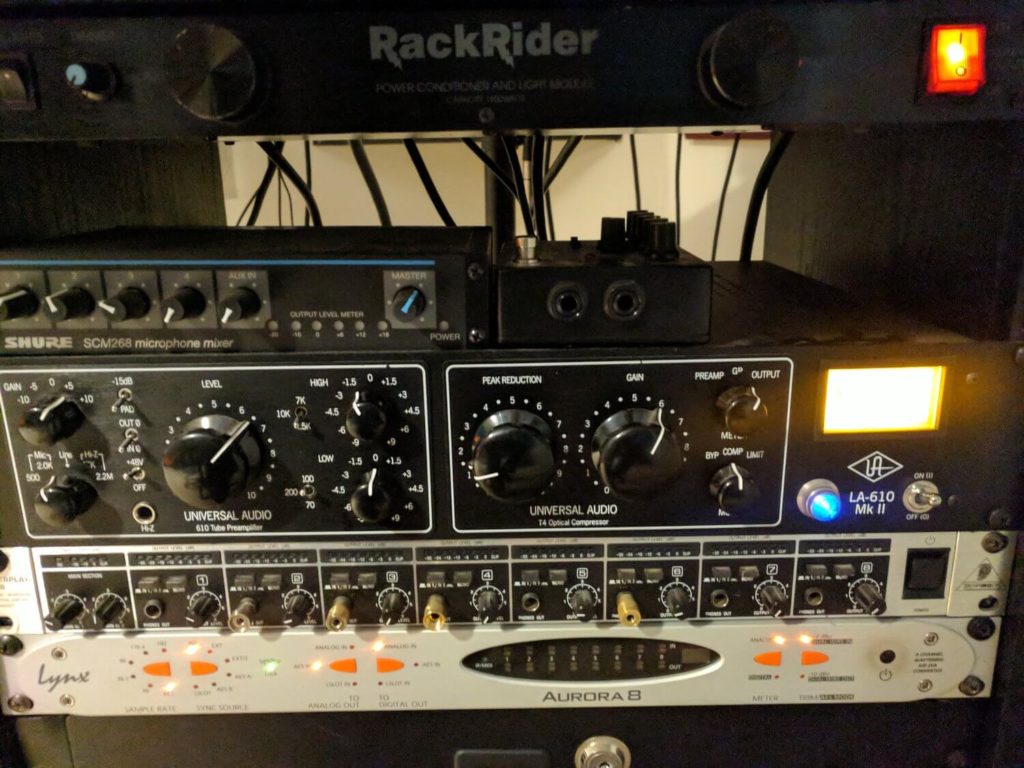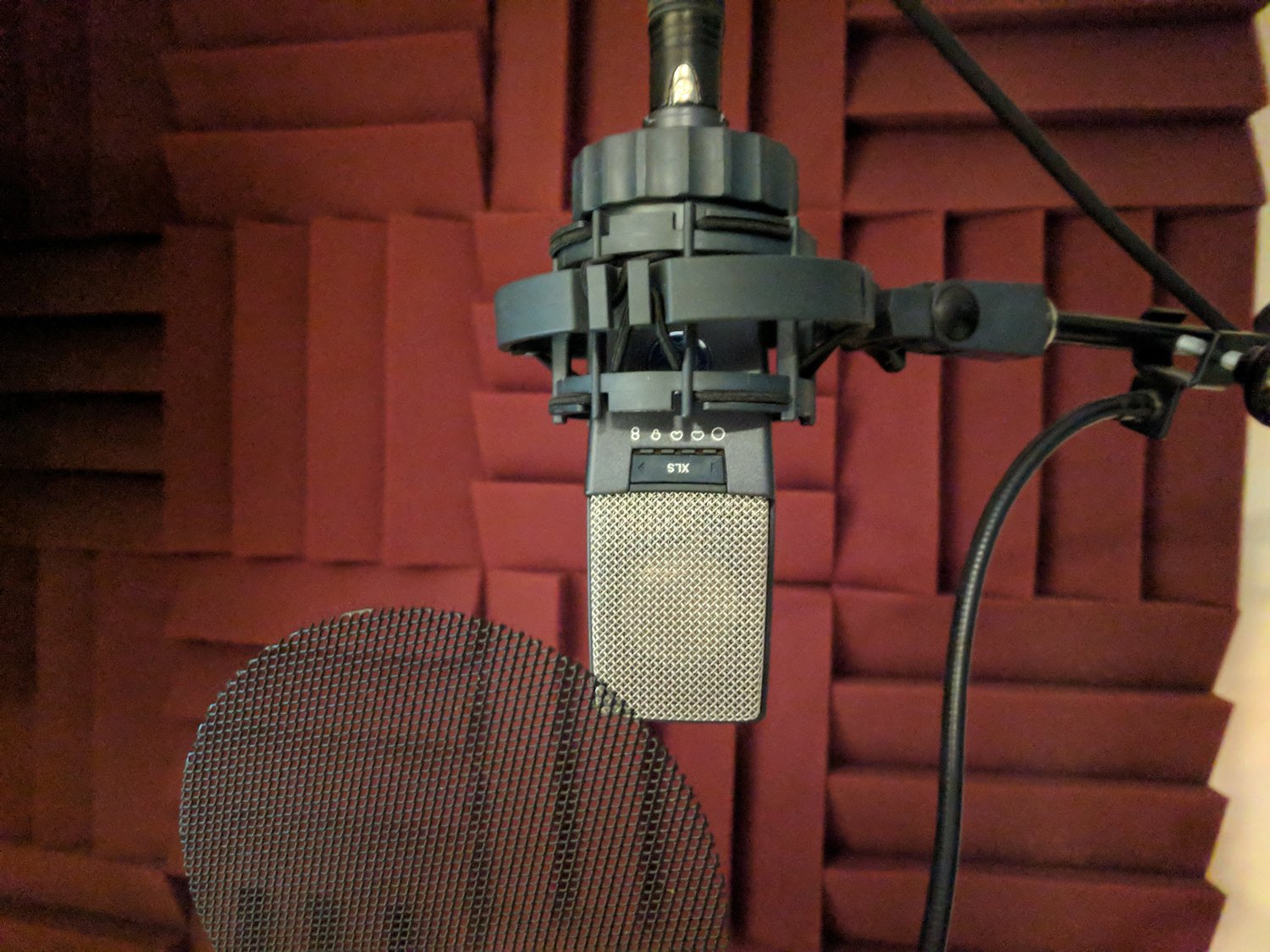I love gear mostly because most things have crazy anime robot names. The UA LA-610 Mk. II is, in picture form, this:

Ignore those guys on top. We’re not talking about those guys.
The Universal Audio LA-610: Good for Voice Over?
This sleek, sexy little unit is what I was primarily trained on at CCM Studios in Denver. We used on vocals, guitars, as a bass DI..it was used on pretty much every session in some capacity. A lot of folks beat up on it because its compressor can be too dark, too extreme, too flattening, and those are valid concerns. But since we’re focusing mainly on VO, I can attest, it treats the voice very well. In my humble opinion.
So on the left side, you’ve got a gain knob, which adds tube warmth to the sound. I like a little bit to help fuzz out otherwise offensive mouth noises, and to give my sound a little character, since that’s what I paid so damn much for. (By the way, I’ll say this now – if you’re starting out, or are ONLY interested in voiceover, this unit is too much and not really what you need. It’s just awesome and does a lot, and I’m very familiar with it, which is why it’s in my house.) Experiment to taste; works well with some voices, other benefit from a more solid-state sound.
Outboard Compression and EQ Options
The big knobs are your input level, compression, and output. For voice, I go .5-1.5 on the compressor, depending on what I’m doing. Sometimes I turn it off entirely. I can’t imagine a voiceover situation that would require more compression than that going in, unless your voice is an actual bass guitar.
This unit’s served me very well over the years. I’ve given it some different output tubes to open up the sound a bit, giving it more headroom and letting the compressor breathe a little more. It does come on very strongly very quickly, and there aren’t any controls like knee, attack, or release to fine-tune, as they’re all tied into the unit’s algorithm. It’s definitely not the most intuitive unit in the world, and for voiceover, you can get away with a lot cheaper and easier to use. When it works, it’s solid as hell, and it works well on singing vocals and it’s a wonderful bass DI.
Consider it a dark chocolate preamp flavor in the world of similarly metaphorically-flavored gear. Not for everyone, but you can get a lot of really cool sounds of it.
<3
Rex
